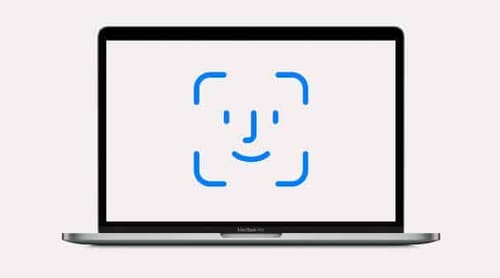 |
| Apple will bring Face ID to Mac computers within two years |
Bloomberg's Mark Gorman believes in his Power On newsletter that Apple plans to roll out Face ID on Macs within two years.
Gorman noted that even the regular iPhone SE and iPad can get Face ID. The only reason Apple isn't doing this now is to cut costs while providing security.
He said, "I believe that implementing Face ID in all major devices is the company's ultimate goal. Apple will reset Touch ID whenever possible. But for various reasons, this technology has had to continue thanks to the iPhone SE and cheaper alternatives." The iPad allows Apple to cut costs while providing security, even though Mac laptop screens are too thin to implement the necessary depth sensor.
Gorman believes the display camera helps differentiate Apple's more expensive devices by eliminating the best products.
According to Guo Mingchi, a trusted analyst, the iPhone is due to be redesigned in 2022, dropping the notch and adopting a perforated design instead.
Guo said Apple is first planning to replace the current notch design on the iPhone X with a new perforated iPhone screen design similar to the screen design Samsung uses in its flagship Galaxy phones.
Coe and Gorman believe that something like this won't happen in 2021, but around 2022.
Mark Gorman also wrote in his newsletter: I hope this situation will change. It won't happen this year, but I bet Face ID on the Mac will come out in a couple of years. Hopefully all iPhones and iPads will transition to Face ID during this time as well.
Apple introduces Face ID on its devices
The reporter added: The on-screen camera helps distinguish the most expensive Apple devices by eliminating the best ones. Facial recognition sensors bring two main benefits to the company: security and augmented reality. Touch ID only provides security.
It's worth noting that this isn't the first time Apple plans to roll out Face ID on Macs. In the beta version of macOS Big Sur, a mention of the TrueDepth camera appeared in the system, indicating that the company is working hard to deploy facial recognition on its computers.
Researchers have also discovered a new feature in macOS Big Sur Beta 3 that contains code that supports PearlCamera. This is the internal codename that Apple uses for the original Deep Sense camera and Face ID. This was first revealed during an iPhone X leak in 2017.
Icons like FaceDetect and BioCapture in this add-on also indicate that Apple is preparing macOS to work with Face ID. In fact, these icons are similar to those used by iOS. This Face ID extension is obviously designed for macOS.
